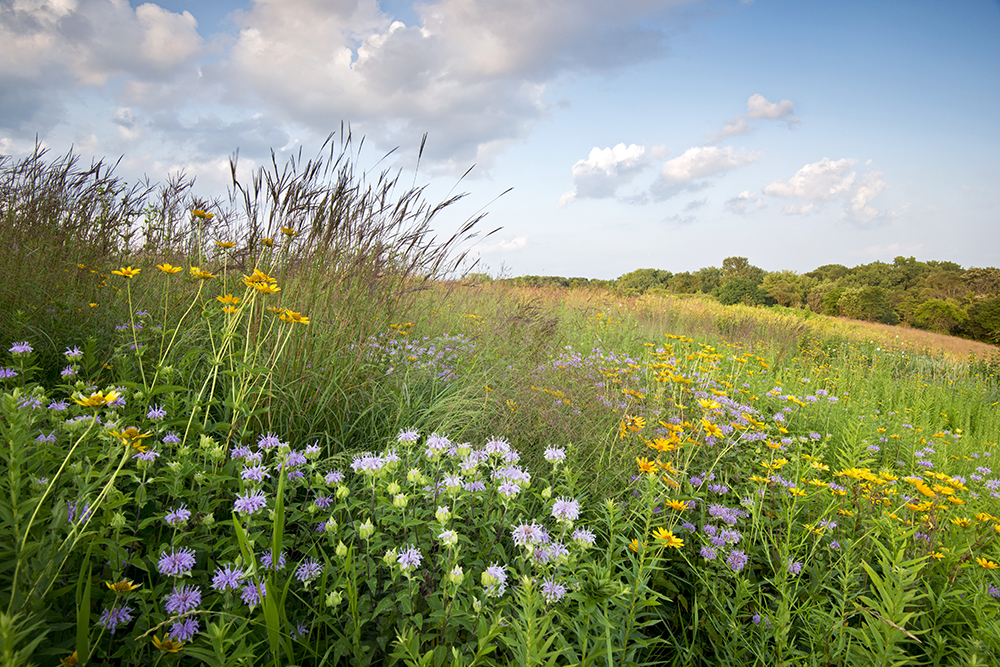Life on the Prairie
What type of plants and animals live on the prairie?
Goal:
Goal:

In the prairies, there are 150 types of grasses that dominate the landscape. Five of these grass species are a major part of the ecosystem. Big bluestem grass, which can grow as tall as 10 feet, is the dominant grass. Other major grasses are little bluestem, Indian grass, switchback, and prairie cord grass.
The five grasses are not alone—during the warmer months, these grasses fill in with wildflowers that attract several pollinators. Most of the wildflowers are perennials, which means they automatically grow back every year. Grasses and wildflowers are producers, constantly converting energy from the sun into fuel for the rest of the ecosystem.
The tallgrass prairies are not only home to producers--they also support a variety of primary and secondary consumers, as well as decomposers. This ecosystem is home to earthworms, which play several important roles. Earthworms act as decomposers, breaking down organic material, while they are also preyed on by birds. Since the tallgrass prairies have little to no trees, birds have adapted to the area by hiding their nests low to the ground. Other prairie residents include spiders, butterflies, grasshoppers, prairie dogs, and bison.

At night on the prairie, a different group of residents appears. Owls, snakes, and other predators hunt for food. Prey animals may take cover or stay hidden. So, while the daytime species sleep, the nighttime species are eating and, sometimes, being eaten.
Test your knowledge by answering the questions below. Then, click on the question to check your answer.